![]()
![]()
![]()
Use LEFT and RIGHT arrow keys to navigate between flashcards;
Use UP and DOWN arrow keys to flip the card;
H to show hint;
A reads text to speech;
260 Cards in this Set
- Front
- Back
|
lipids consist of: |
–hydrocarbon chains and fused rings
–hydrophobic or amphipathic molecules insoluble in water soluble in organic solvents (benzene, chloroform, alcohols, ethers, etc) |
|
|
are most FAs found in cis or trans configuration? |
cis
|
|
|
trans double bonds in FAs can be produced by:
|
1. biohydrogenation of unsaturated FAs in ruminants (happens in gut of cattle, etc)
2. industrial hydrogenation of unsaturated FAs –this process is used to make margarine trans fats have been correlated w an increased risk of atherosclerosis |
|
|
essential FAs
|
C18:2 cis–Δ9,12
C18:3 cis–Δ9,12,15 C20:5 cis–Δ5,8,11,14,17 C22:6 cis–Δ4,7,10,13,16,19 |
|
|
//fce-study.netdna-ssl.com/2/images/upload-flashcards/05/09/24/9050924_m.png
|
triacylglycerol
|
|
|
TAG
|
–used primarily for energy storage (fuel)
–carbons are most reduced compared to carbs and proteins –when oxidized, TAGs yield more energy –TAGs are very hydrophobic. Carry less water weight than polysaccharides –stored in fat cells called adipocytes –can be used for insulating at low temps |
|
|
where are glycerophospholipids found?
|
abundant in membranes (aggregate to form bilayer structure)
|
|
|
phospholipases
|
examples of hydrolytic enzymes part of a membranous sheath (myelin sheath) that surrounds and insulates the axons of some neurons |
|
|
cerebrosides
|
examples of glycosphingolipids
–have a single sugar linked to the oxygen of C1 in ceramide –when galactose is attached they are normally found in the plasma membranes of cells in neural tissue –when glucose is attached, they are normally found in plasma membranes of cells in non–neuronal tissues –the are neutral |
|
|
cholesterol structure
|
4 fused rings:
–3 w 6C, 1 w 5C planar and rigid in structure amphipathic bile acids are polar derivatives of cholesterol pre–cursor for steroid hormones |
|
|
eicosanoids
|
signaling lipid
–act as paracrine hormones (only act on cells near synthesis) |
|
|
prostaglandins
|
derived from eicosanoids
–produced in response to tissue injuries –can cause an inflammatory and pain response –can also cause smooth muscle contractions of the uterus during menstruation and labor |
|
|
thromboxanes
|
derived from eicosanoids
–produced by platelets –induce the formation of blood clots |
|
|
NSAIDs
|
–block formation of prostaglandins and thromboxane
|
|
|
leukotrienes
|
ecosanoid derivative
–cause contraction of smooth muscle lining the airways in the lung –overproduction of LTs can causes asthma attacks –anti–asthmatic drugs such as prednisone are used to inhibit leukotriene synthesis |
|
|
steroid hormones
|
Estrogen, Testosterone
–derived from cholesterol –carry messages between tissues |
|
|
Lipid–soluble vitamins
|
Vitamin K, Vitamin E |
|
|
bile salts
|
used to emulsify fats (solubilize fats into aqueous environment) into the SI
amphipathic construct micelles, increasing TAGs accessibility to water–soluble lipases (remove FA acyl chains) |
|
|
intestinal lipases
|
hydrolyxe TAGs to diacylglycerol (DAGs) and monoacylglycerols (MAGs)
–remove acyl chains from TAGs |
|
|
chylomicrons
|
consists of TAGs, apolipoproteins, cholesterol, single layer of phospholipids
TAGs make up 80% of mass apolipoproteins protrude from surface to help signal uptake and metabolism of chylomicrons chylomicrons move through lymphatic system and then into bloodstream towards muscle and adipose tissues |
|
|
lipoprotein lipase
|
enzyme in capillaries of adipose and muscle tissues
–hydrolyzes TAGs to FAs and glycerol activated by apoC–II |
|
|
mobilization of TAGs from adipose tissue
|
1. glucagon or epinephrine binds to adipocyte membrane causing activation of Gs
2. Gs activates adenlyl cyclase causing formation of cAMP, which activates protein kinase A (PKA) 3. PKA phosphorylates hormone–sensitive lipase (HSL) and perilipins 4. HSL an dother lipases cleave TAGs into free FAs 5. FAs enter bloodstream and are transported by binding to serum albumin 6. FAs enter myocyte via FA transporter and undergoes oxidation to CO2 resulting in ATP |
|
|
glycerol metabolism
|
glycerol produced from TAGs can also be used for energy
–glycerol is phosphorylated and oxidized into dihydroxyacetone phosphate (DHAP) –DHAP can enter glycolysis and generate ATP |
|
|
how do FAs get from cytosol into mitochondrial matrix?
|
carnitine shuttle
FAs w chain lengths of 12 or less do not require a transporter FAs with 14 or more C do required transporter FA must be activated by Coenzyme A before it can use carnitine shuttle |
|
|
FA activation
|
acyl CoA synthetase reaction
free FA + coenzymeA –––> fatty acyl–CoA (ATP ––> AMP + PPi) costs 2 ATP equivalent |
|
|
carnitine acyltransferase I (CAT I)
|
enzyme that catalyzes attachment of fatty acyl CoA to carnitine
|
|
|
how is the fatty acyl–carnitine ester transported into mitochondrial matrix?
|
by facilitated diffusion through acyl–carnitine/carnitine transporter of the inner mitochondrial membrane
no energy required |
|
|
carnitine acyltransferase II (CAT II)
|
removes fatty acyl CoA from carnitine
found on inner mitochondrial membrane |
|
|
carnitine shuttle
|
used to move fatty acid into the mitochondrial matrix
the carnitine–mediated entry process into the mitochondrial matrix is the rate–limiting step of beta–oxidation!! there are 2 separate pools of coenzyme A: pool 1: cytosolic pool – for FA synthesis pool 2: MT matrix pool – used for oxidative degradation of pyruvate, FAs, some AAs |
|
|
overview of beta–oxidation
|
1. 2–C fragments removed from FA to make acetyl CoA
–oxidation of FA also occurs, forming NADH and FADH2 2. acetylCoA enters TCA cycle producing 1 ATP eq and 3 NADH and 1 FADH2 3. NADH and FADH2 generated from B–ox and TCA cycle go to ETC to generate ATP (via ATP synthase) and H2O |
|
|
steps of B–ox
|
O–H–O–T
oxidation hydration oxidation thiolysis (cleavage) |
|
|
B–ox step 1:
oxidation |
form trans double bond at beta carbon
+1 FADH2 (1.5ATP) |
|
|
B–ox step 2:
hydration |
add water across double bond to add OH on beta–C
–stereochemistry in L configuration –1H2O |
|
|
B–ox step 3:
oxidation |
alcohol on beta–C oxidized to ketone (reducing NAD+)
+1 NADH (2.5 ATP) |
|
|
B–ox step 4:
thiolysis |
add CoA – cleave at alpha–beta carbon
+1 acetylCo a (or +2 acetylCoA on final round) |
|
|
what is produced when 1 acetyl–CoA enters TCA cycle?
|
3 NADH
1 FADH2 1 GTP =10 ATP eq |
|
|
what happens to odd # FAs?
|
the last round of beta–ox results in a 5–C molecule
–broken down into acetyl CoA (to TCA cycle) and propionyl CoA |
|
|
what happens to propionyl CoA?
|
converted to succinylCoA via 3 steps
costs: –1 ATP |
|
|
what is the net amount of ATP made from propionyl CoA?
|
+4 ATP eq
|
|
|
what is the net amount of H2O made from propionyl CoA?
|
+1 H2O
|
|
|
beta–ox of monounsaturated FAs
|
–proceed as normal until get 3–C away from double bond
–cis double bond is isomerized to a trans DB (now can continue) –this skips the 1st oxidation step of beta–ox (no FADH2 is made for that round) –1.5ATP, –1H2O |
|
|
beta–ox polyunsaturated FAs
|
proceed as for monounsaturated |
|
|
what are pre–cursor molecules of oxaloacetate?
|
glucose
glucogenic AAs odd–chain FAs (succinylCoA ––> OAA) glycerol (––> DHAP ––> pyruvate) lactate (––> pyruvate) |
|
|
in liver cells, what happens with OAA during extreme starvation
|
there is no net gain of OAA
OAA is used to produce glucose (via gluconeogenesis) OAA used in citric acid cycle ––> provide energy for the liver |
|
|
what happens to acetylCoA during extreme starvation
|
there is a build–up of acetylCoA molecules because no net gain of OAA
the acetylCoA molecules are used to construct ketone bodies |
|
|
what are 3 ketone bodies?
|
1. acetone
2. acetoacetate 3. D–beta–hydroxybutyrate "blood friendly" versions of acetyl CoA |
|
|
acetone
|
ketone body
produced in smaller quantities and is exhaled |
|
|
acetoacetate
|
ketone body
transported by blood to tissues other than the liver (including skeletal and heart muscle, renal cortex, and the brain) |
|
|
D–beta–hydroxybutyrate
|
ketone body
transported by blood to tissues other than the liver (including skeletal and heart muscle, renal cortex, and the brain) |
|
|
why can't the brain use free FAs for energy?
|
FAs are not able to penetrate the BBB
–prolonged starvation –> 75% of fuel required by the brain comes from ketone bodies |
|
|
where are ketone bodies produced?
|
liver cells
mitochondrial matrix |
|
|
acetoacetate synthesis
|
1. 2 acetylCoA molecules combine to form acetoacetylCoA (reverse of last step of B–ox) via thiolase
2. acetoacetylCoA condenses with another acetylCoa to form HMG–CoA via HMG–CoA synthase –a CoA is produced in this step! 3. HMG–CoA is cleaved to form acetoacetate via HMG–CoA lyase –acetylCoA is also produced |
|
|
acetone synthesis from acetoacetate
|
decarboxylation via acetoacetate decarboxylase
|
|
|
D–beta–hydroxybutyrate synthesis from acetoacetate
|
via D–beta–hydroxybutyrate dehydrogenase using 1 NADH
|
|
|
what determines whether acetoacetate or D–beta–hydroxybutyrate is made?
|
the ratio of NADH/NAD+
higher [NADH], then higher [D–beta–hydroxybutyrate] |
|
|
what happens to D–beta–hydroxybutyrate when it arrives at extrahepatic tissues?
|
it is oxidized (+1 NADH) to form acetoacetate via D–beta–hydroxybutyrate dehydrogenase
|
|
|
what happens to acetoacetate when it reaches extrahepatic tissues
|
after 2 enzymatic steps (beta–ketoacyl–CoA transferase and thiolase), acetoacetate is made into 2 acetylCoA molecules
the acetylCoA can enter the TCA cycle of extrahepatic tissues |
|
|
why do liver cells express extremely low levels of beta–ketoacyl–CoA transferase?
|
liver cells are the producer ketone bodies
the liver does not want to utilize the KBs for energy production – would be a futile cycle |
|
|
where do extrahepatic tissues obtain OA during severe starvation?
|
from glucose that is produced from the liver
|
|
|
ketoacidosis
|
an increased concentration of ketone bodies in the blood |
|
|
purpose of the citrate shuttle
|
FA synthesis occurs in the cytosol, but building blocks for FA synthesis (acetylCoA) are present in MT matrix
–acetylCoA needs to be tranpsorted into the cytosol to undergo FA synthesis |
|
|
steps of acetylCoA using citrate shuttle
|
1. citrate synthase condenses OAA w acetylCoA to make citrate in matrix
2. citrate is transported through the citrate transporter (located on the inner MT matrix) 3. when citrate enters the cytosol it is cleaved into acetylCoA and OAA by citrate lyase –this step uses –1ATP there is no transporter to allow OAA back into matrix 4. cytosolic malate dehydrogenase reduces OAA to malate 5. malate can re–enter matrix or be oxidized to pyruvate (via malic enzyme) 6. pyruvate is carboxylated (via pyruvate carboxylase) to re–form OAA in matrix |
|
|
what are the 2 main sources of reducing equivalent NADPH required for FA synthesis
|
1. malic enzyme (1 NADPH)
2. pentose phosphate pathway (2 NADPH) |
|
|
synthesis of malonylCoA
|
enzyme acetylCoA carboxylase (ACC) producse malonylCoA from acetylCoA
–HCO3– is used to provide the additional carbon to acetylCoA –this requires –1ATP –this step is irreversible this is the committed step in FA synthesis! |
|
|
FAS I
|
fatty acid synthase I
consists of a single multifunctional polypeptide chain –2 of these chains come together to form a homodimer –has 7 domains –2 domains are: 1. beta–ketoacyl–ACP synthase (KS) domain 2. Acyl Carrier Protein (ACP) |
|
|
KS domain of FAS
|
beta–ketoacyl–ACP synthase
–contains a thiol (–SH) group used to bind acetylCoA and malonylCoA and when they are hydrolyzed off these thiol groups, the rxn is highly exergonic |
|
|
ACP domain of FAS
|
aceyl carrier protein
–contains a thiol (–SH) group used to bind acetylCoA and malonylCoA and when they are hydrolyzed off these thiol groups, the rxn is highly exergonic |
|
|
4 steps to FA synthesis
|
(2 preliminary steps)
1. Condensation 2. Reduction 3. Dehydration 4. Reduction |
|
|
preliminary step 1 of FA synthesis
|
acetyl group (from acetylCoA) is transferred onto the thiol group of ACP
1 CoA is lost the acetyl group is then transferred from ACP onto KS |
|
|
preliminary step 2 of FA synthesis
|
the malonyl group is transferred from malonylCoA to the thiol group on ACP
|
|
|
step 1 FA synthesis
condensation |
KS performs a condesnation rxn w the acetyl and malonyl groups (and now attached to only ACP)
during this step, decarboxylation of the malonyl occurs (CO2 released) the loss of CO2 makes the condensation rxn exergonic (favourable) |
|
|
step 2 FA synthesis
Reduction |
the carbonyl at C3 now undergoes a reduction
NADPH is used this is catalyzed by KR the beta–carbon is in D–configuration |
|
|
step 3 FA synthesis
Dehydration |
an H2O molecule is removed (remove OH group and form double bond between C2 and C3)
|
|
|
step 4 FA synthesis
Reduction |
the trans double bond is reduced (and saturated) by enzyme ER
NADPH is used C4:0–ACP is formed as the final product after the first round of FA synthesis |
|
|
step 5 FA synthesis
|
C4:0–ACP is transferred onto the –SH group of KS in preparation for the next round of FA synthesis
|
|
|
step 6 FA synthesis
|
another malonylCoA "recharges" ACP
catalyzed by MAT |
|
|
enzyme TE
|
catalyzes rxn of using a water molecule to release the finished product from FAS in FA syntehsis
|
|
|
fatty acid elongation system
|
process that makes palmitate (C16:0 – product of FAS I) into longer–chain FAs
–present on cytosolic face of smooth ER –elongations occur by adding 2–C units in the form of malonyl CoA |
|
|
fatty acyl–CoA desaturase
|
enzyme used to introduce double bonds in the saturated FA chains
|
|
|
essential FAs in mammal diet
|
mammals are unable to produce double bonds beyond C–9 in the FA chain
C18:2 cis–Δ9,12 C18:3 cis–Δ9,12,15 C20:5 cis–Δ5,8,11,14,17 C22:6 cis–Δ4,7,10,13,16,19 |
|
|
regulation of ACC
|
ACC plays role in β–ox and FA synthesis
general rule: ACC activated in times of plenty and deactivated when energy is required citrate diverts cell metab from consumption of fuel to storage of fuel as FAs (citrate shuttle – citrate moved out of MT matrix into cytosol when high [acetylCoA], high [ATP] palmitoyl–CoA (C16:0–CoA) – palmitate is end product, when attached to CoA, inactivates ACC |
|
|
hormonal control of ACC
|
1. when blood glucose levels are high, insulin is secreted from pancreas
2. insulin–dependent phosphatase dephosphorylates ACC, activating ACC 3. when ACC is activated, acetyl CoA is carboxylated to form malonyl CoA 4. malonylCoA inhibits carnitine acyltransferase I (CAT I) (this prevents additional FAs from being oxidized – inhibits transport into MT matrix) 5. when blood glucose levels are low, glucagon secreted by pancreas 6. activate protein kinase A (PKA), which phosphorylates ACC, inactivating it 7. FAs allowed to enter MT matrix 8. FAs will be used as fuel source for ATP. FAs are oxidized via β–ox |
|
|
AMPK
|
AMP–dependent protein kinase |
|
|
cholesterol structure
|
3 main groups:
polar –OH head steroid nucleus alkyl side chain |
|
|
uses of cholesterol
|
cell membranes
steroids bile salts vitamin D |
|
|
cholesterol synthesis
|
–all carbons in come from acetyl CoA
–synthesis occurs in the ER –most of cholesterol synthesized in liver |
|
|
steps of cholesterol synthesis
|
1. condensation
3acetate ––> mevalonate 2. phosphorylation and decarboxylation mevalonate ––> activated isoprene acetate ––> mevalonate ––> activated isoprene ––> squalene ––> cholesterol |
|
|
synthesis of mevalonate
|
acetyl–CoA ––>
acetoacetyl–CoA ––> β–hydroxy–β–methylglutaryl–CoA (HMG–CoA) ––> mevalonate *2 acetylCoAs combined via thiolase (aka acetylCoA acetyltransferase) *1 acetylCoA condenses w acetoacetylCoA to form HMG–CoA. this is catalyzed by HMG–CoA synthase *HMG–CoA is reduced to form mevalonate, catalyzed by HMG–CoA Reductase (committed step in cholesterol synthesis) |
|
|
regulation of cholesterol synthesis
|
high [glucagon] in times of starvation – phosphorylation of HMG–CoA reductase, inactivating enzyme and inhibiting cholesterol synthesis
high [insulin] in times of plenty – dephosphorylation of HMG–CoA reductase, activating enzyme |
|
|
transcriptional control of HMG–CoA Reductase
|
SREBP = Sterol Regulatory Element–Binding Protein
SCAP (cholesterol sensor) = SREBP Cleavage–Activating Protein low [cholestero]: SCAP binds to SREBP in ER, transported to golgi, cleavage, SREBP enters nucleus and acts as transcription factor to regulate cholesterol synthesis of HMG CoA reductase high [cholesterol]: conformational change in SCAP, preventing it from binding to SREBP |
|
|
lipid transport
|
non–polar nature of lipids necessitates carriers
–lipoproteins contain various combos of phospholipids, cholesterol, cholesteryl esters, and TAGs |
|
|
lipoprotein classes
|
–range in size, different densities (protein/lipid), different fxns, different sites of production
VLDL – very low density lipoprotein LDL = low densitiy lipoprotein HDL = high density lipoprotein |
|
|
exogenous pathway of lipid delivery
|
–chylomicrons are produced in enterocytes and carry TAGs
–apoC–II activates lipoprotein lipase, releasing free FAs from TAGs into tissues –apo E on chylomicron remnants is recognized by liver for receptor–mediated endocytosis |
|
|
endogenous pathway of lipid delivery
|
–excess FAs, cholesterol, or carbohydrate in diet = production of VLDL
–VLDLs carry cholesterol, cholesteryl esters, and TAGs –ApoC–II activates lipoprotein lipase, releasing free FAs from TAG in capillaries = IDL –after releasing more TAGS, IDLs = LDLs –LDL transports cholesterol to tissues where apoB–100 activates LDL receptors = endocytosis –cholesterol can also be delivered to macrophages = foam cells |
|
|
reverse cholesterol transport
|
HDLs carry cholesterol from extrahepatic tisues to the liver via receptors
–HDLs contain enzymes that esterifies cholesterol |
|
|
enterohepatic pathway
|
–cholesterol is converted to bile salts and stored in gall bladder
–bile salts are reabsorbed by the liver after release from gall bladder |
|
|
receptor mediated endocytosis of LDL
|
1. LDL receptor synthesized in rough ER moves to plasma membrane via golgi
2. LDL receptor binds apoB–100 on LDL, initiating endocytosis 3. LDL is internalized in endosome 4. LDL receptor is segregated into vesicles, recycled to surface 5. ensdosome w LDL fuses w lysosome 6. lytic enzymes in lysosome degrade apoB–100 and cholesteryl esters, releasing AAs, FAs, and cholesterol |
|
|
hypercholesterolemia
|
absent or malfxning LDL receptors leads to prolonged and excess LDL –> hypercholesterolemia
–circulating lipids become partially oxidized |
|
|
hypercholesterolemia and atherosclerosis
|
–the oxidized lipoproteins accumulate and stick to extracellular matrix
–macrophages internalize the LDL and form foam cells –free cholesterol accumulates in foam cell –> apoptosis releasing foam cell remnants –over time, plaques accumulate consisting of extracellular matrix material, foam cell remnants, and smooth muscle tissue high levels of LDL = high levels of atherosclerosis |
|
|
lifestyle control of cholesterol
|
–decrease cholesterol consumption
–type of fat consumed: generally , saturated FAs are cholesterol elevating when polyunsat FAs are 3x higher than Sat FAs, LDL decreases –whole grains (viscous fiber decreases LDL – fiber pulls out cholesterol so less LDLs being made) –exercise increases HDL |
|
|
pharmacological control of cholesterol
|
–reduce cholesterol synthesis = statins
–resins block intestinal bile acid reuptake –fibrates, such as enofibrate = transcriptional induction of synthesis of major HDL apolipoproteins, apoA–I and apoA–II –NIacin (vit B3) inhibits cAMP in adipose tissue and increase ApoA1 levels = decrease fat breakdown = LDL decreases, VDL decreases, HDL increase |
|
|
what happens to proteins with a balanced diet? (no excessive consumption of proteins, no starvation)
|
–cellular proteins are synthesized and degraded at about equal rates
–some proteins undergo oxidative degradation |
|
|
what happens with excessive consumption of proteins?
|
–cellular proteins cannot be stored
–the excess cellular proteins undergo oxidative degradation |
|
|
what happens to proteins with starvation/uncontrolled diabetes?
|
–carbohydrates are unavailable or not properly used by the body
–cellular proteins can be used as a fuel source |
|
|
nitrogen balance
|
= nitrogen ingested (primarily as protein) – nitrogen excreted (primarily as urea)
zero: protein synthesis = protein degradation positive: synthesis > degradation negative: synthesis < degradation |
|
|
enzymatic protein degradation steps
|
1. protein enters stomach
2. protein is partially degraded by HCl and pepsin in stomach 3. stomach contents pass into SI, pH is increased 4. release of zymogens from the pancreas 5. activation of zymogens to active proteases. Further cleaving of small peptides into free AAs 6. free AAs, di– and tripeptides are absorbed by villi in SI |
|
|
step 1: protein enters stomach
|
a) gastrin released
–secretion of gastrin by gastric mucosa –gastrin is a peptide hormone that is released in the blood stream b) HCl released –gastrin causes parietal cells to secrete HCl –causes stomach to decrease in pH (1–2.5) c) pepsinogen secreted –gastrin causes chief cells to secrete pepsinogen (zymogen) –autocatalytic cleavage to activate pepsinogen –> pepsin (this occurs only at low pH) |
|
|
step 2: protein is partially degraded by Hcl and pepsin in stomach
|
–HCl causes 3D structure of proteins to denature, allowing greater access for enzymes to degrade the proteins
–pepsin hydrolyzes the peptide bonds on the amino–terminal side of the aromatic amino acid residues |
|
|
step 3: stomach contents pass into SI
|
d) secretin release
–low pH triggers S–cells (in duodenum) to secrete secretin (peptide hormone) in the bloodstream e) HCO3– released –secretin stimulates pancreas to release HCO3– –HCO3– causes pH of duodenum to rise to pH=7 |
|
|
step 4: release of zymogens from pancreas
|
f) cholecystokinin (CCK) relased
–when AAs arrive in SI, this triggers the mucosal epithelial cells (of the SI) to release CCK (peptide hormone) into the bloodstrem g) Trypsinogen, chymotrypsinogen, procarboxypeptidases A and B released –CCK causes pancreas to release more zymogens |
|
|
sstep 5: activation of zymogens to active proteases
|
–trypsin activates:
procarboxypetpidase A and B, chymotripsinogen and proelastase to carboxypeptidase A and B chymotrypsin elastace |
|
|
step 6: free AAs, di– and tri–peptides are abs by villi in SI
|
the free AAs/small peptides enter bloodstream and are transported to liver
|
|
|
when are AAs catabolized?
|
1. when AAs from normal protein turnover are not needed to make more protein
2. when more AAs are ingested than the body needs for protein synthesis 3. during starvation and/or uncontrolled diabetes. when OAA is needed. no intake of carbohydrates |
|
|
aminotransferases
|
–when AAs are catabolized by the liver, the amino group is removed by aminotransferase enzymes
–homodimeric and have 2 active sites –all aminotrnasferases use pyridoxal phosphate (PLP) as the prosthetic group –PLP is derived from vitamin B6 pyridoxal phosphate (PLP) = amino group acceptor pyridoxamine phosphate (PMP) = amino group donor |
|
|
glutamate
|
–the amino groups of many different AAs are collected in the form of glutamate
–glutamate acts as an amino donor for other biosynthesis pathways –glutamate is the lead molecules |
|
|
how does the PLP stay attached to the enzyme's active site?
|
–PLP is attached via a covalent bond
–the PLP must be linked to a key lysine residue in the active site –PLP is linked on the ε–amino group of lysine (via Schiff Base rxn) |
|
|
internal aldimine
|
the resting state of the aminotransferase enzyme
–Schiff–base linkage (protonated) linking lysine to PLP |
|
|
external aldimine
|
the incoming AA replaces the position of the lysine residue
(external AA forms a Schiff base linkage w PLP) |
|
|
aminotransferase mechanism
|
–first substrate comes in (L–AA)
–at this stage, the lysine is in a Schiff–base linkage w PLP –the aa reacts w PLP (displacing lysine) and forms an AA–PLP Schiff base intermediate –the alph–keto acid is released –PMP is now present in the active site –the L–AA is released from active site. A schiff–base linkage restored w Lys –the alph–keto acid racts w the amino group (from PMP) forming an AA. An AA–PLP Schiff base intermediate results –a different alpha–keto acid enters |
|
|
why do amino groups need to be transported to liver prior to being eliminated from the body?
|
free ammonia is toxic
–must use glutamine to transport the ammonia to the liver –the liver houses the enzymes for the urea cycle |
|
|
amino acid catabolism steps
|
1. in extrahepatic cells all amino groups are collected on the aa glutamate (by aminotranferases)
2. glutamate is phosphorylated to form γ–glutamyl phosphate by enzyme glutamine synthetase –uses –1ATP eq 3. ammonia is added to the γ–glutamyl phosphate intermediate to form L–glutamine via glutamine sythetase 4. glutamine is moved into bloodstream and transported to liver |
|
|
what happens when glutamine arrives at liver
|
glutamine is shipped to the MT matrix
the enzyme glutaminase hydrolyzes the amino group off of glutamine to form NH4+ and glutamate this uses –1H2O –the side chain NH4+ will eventually be turned into urea glutamate can undergo oxidative deamination to remove the alpha–amino group other AAs that arrive in the liver cytoplasm are converted into glutamate prior to entering MT matrix (via aminotranfserases) |
|
|
the urea cycle: preliminary steps
|
enzyme glutamate dehydrogenase removes the amino group from glutamate and produces +1 NAD(P)H + α–KG
–1H2) is lost the process of removing the amino group = oxidative deamination |
|
|
//fce-study.netdna-ssl.com/2/images/upload-flashcards/98/63/70/8986370_m.png
|
α–KG
|
|
|
regulation of glutamate dehydrogenase
|
–an allosteric site on Glu DHase can bind ADP/GDP or ATP/GTP
–ADP and GDP act as +ve modulators –ATP and GTP act as –ve modulators (inhibit) glutamate –> α–KG |
|
|
the urea cycle: CPS I
|
the NH4+ group has been removed and combines w HCO3– to produce carbamoyl phosphate
catalyzed by enzyme carbamoyl phosphate synthetase I (CPS I) THIS IS THE RATE LIMITING STEP OF THE UREA CYCLE! uses –2 ATP eq |
|
|
ornithine transcarbamoylase
|
urea cycle
location: MT matrix rxn 1: carbamoyl group is added to ornithine to form citrulline phosphate group removed during this process (ornithine is analogous to OAA in TCA cycle) |
|
|
argininosuccinate synthetase
|
urea cycle
AsS location: cytosol rxn 2a) takes 1 ATP and attaches AMP to citrulline (adenylation rxn) (costs 2 ATP eq) rxn 2b) the aspartate amino acid is attached to the citrullyl–AMP intermediate. This brings in a 2nd amino group to be excreted –the AMP is removed during this process –Argininosuccinate is formed! |
|
|
argininosuccinase
|
urea cycle
location: cytosol rxn 3: argininosuccinate is cleaved into fumarate and arginine This is the only reversible urea cycle step fumarate can enter TCA cycle |
|
|
arginase
|
urea cycle
location: cytosol rxn 4: a hydrolysis rxn separates arginine into urea and ornithine –urea is released into the cytosol –ornithine is regenerated, ready to accept another carbamoyl group –ornithine must be transported into the MT matrix before it can accept another carbamoyl group |
|
|
long–term regulation of urea cycle
|
controlled at the transcriptional level
–transcription factors are upregulated when increased ammonia detoxification is necessary synthesis of enzymes increased when: 1. large dietary intake of proteins 2. extreme starvation/untreated diabetes, and proteins are supplying metabolic energy synthesis of enzymes decreased when: 1. small dietary intake of proteins 2. diet exclusively carbohydrates and fats |
|
|
short–term regulation of urea cycle
|
controlled by allosteric regulation
enzyme regulated: CPS I the molecule N–acetylglutamate is an allosteric activator of CPSI |
|
|
//fce-study.netdna-ssl.com/2/images/upload-flashcards/02/21/24/9022124_m.png
|
N–acetylglutamate
|
|
|
diseases related to urea cycle
|
–deficiencies in urea cycle enzymes are normally lethal (unless treated at birth)
–enzyme deficiencies result in hyperammonemia –can lead to brain edema causing coma, lethargy, and brain damage |
|
|
symptoms of newborns w urea cycle defects
|
–normal appearance at birth
–lethargic –irritability –hypothermia –seizures |
|
|
what treatment options are performed in order to aid pts w urea cycle deficiencies?
|
goal: to remove NH3/NH4+ from the body
–low protein diet (still need to get essential AAs) –dialysis –liver transplant –gene therapy (expression vectors for missing enzyme) –nitrogen scavengers –addition of arginine |
|
|
urea cycle Tx: arginine
|
supplementation with arginine can be partially effective in treating urea cycle disorders at steps 1, 2, and 3 of the urea cycle
arginine would stimulate production of ornithine to keep the urea cycle going –nitrogens can be excreted in the form of citrulline and argininosuccinate (non–toxic) *supplementation w arginine does not help individuals who are already deficient in the enzyme arginase |
|
|
essential amino acids
|
PVT. TIM HALL
Phenylalanine Valine Threonine Tryptophan Isoleucine Methionine Histidine Arginine Leucine Lysine |
|
|
urea cycle Tx: benzoate
|
can be used to treat urea cycle deficiencies by removing the amino acid glycine
benzoate is "activated" w CoA the aa glycine is transferred onto benzoyl–CoA to form hippurate (aka benzoylglycine). Coenzyme A is released –hippurate is a non–toxic compound that is excreted in the urine more glycine would be synthesized (resulting in transfer of amino groups). This would decrease overall amount of N in body |
|
|
urea cycle Tx: phenylbutyrate
|
4 carbons
the short chain FA undergoes beta–ox and is shortened by 2 carbons –the phenylacetate molecule is activated –glutamine is transferred onto phenylacetyl–CoA to produce phenylacetylglutamine |
|
|
CPS I deficiency Tx
|
dietary supplements:
benzoate phenylbutyrate arginine nitrogen removed as: hippurate phenylacetylglutamine |
|
|
OTC deficiency Tx
|
dietary supplements:
benzoate phenylbutyrate arginine nitrogen removed as: hippurate phenylacetylglutamine |
|
|
argininosuccinate synthetase deficiency Tx
|
dietary supplements:
benzoate phenylbutyrate arginine nitrogen removed as: hippurate phenylacetylglutamine citrulline |
|
|
argininocuccinase deficiency Tx
|
dietary supplements:
benzoate phenylbutyrate arginine nitrogen removed as: hippurate phenylacetylglutamine citrulline argininosuccinate |
|
|
arginase deficiency Tx
|
dietary supplements:
benzoate phenylbutyrate nitrogen removed as: hippurate phenylacetylglutamine |
|
|
light activity or rest
|
primary source of fuel: free FAs from adipose tissue
–these free FAs undergo beta–ox and the acetylCoA that is produced enters the TCA cycle –blood glucose and ketone bodies can also be used by skeletal muscle as a fuel source |
|
|
bursts of heavy activity (Cori Cycle)
|
demand for ATP increases dramatically
–however oxidation of FAs can not provide enough ATP for muscle tissue –blood glucose and glycogen stored in muscle cells must be used to provide ATP molecules –glycolysis occurs and results in the production of pyruvate (pyruvate <–> lactate) –lactate travels through bloodstream to liver –lactate is converted back to pyruvate in liver (via lactate DHase) –pyruvate undergoes gluconeogenesis to produce glucose –glucose can be transported back into the bloodstream to muscle cells to generate more ATP via anaerobic respiration |
|
|
Cori Cycle
|
the cycline of lactate and glucose between the liver and muscle cells
|
|
|
why do free FAs not provide sufficient ATP for muscles undergoing heavy activity/exercise?
|
energy from FAs is in acetylCoA
–acetylCoA cannot enter TCA cycle in anaerobic conditions, therefore other fuel sources must be used (ie glucose) |
|
|
Glucose–Alanine Cycle
|
the cycling of alanine and glucose molecules between skeletal muscle and the liver
|
|
|
bursts of heavy activity (glucose–alanine cycle)
|
–some muscle protein can also be used for energy (via anaerobic respiration)
–protein is broken down into AAs –the carbon skeletons of the AAs can provide energy when oxidized –the amino groups (NH4+) are collected in the muscle tissue as glutamate –pyruvate is formed from glycolysis –alanine aminotransferase is used to dispose of the nitrogenous waste that is produced pyruvate + glu ––> alphaKG + alanine –alanine is transported to liver through bloodstream –alanine aminotransferase is used again in reverse direction alphaKG + alanine ––> pyruvate + glu –glutamate can undergo oxidative deamination and dispose of the nitrogenous waste via urea cycle –pyruvate formed can provide glucose (gluconeogenesis) –glucose can then be transported into bloodstream to supply skeletal muscle w more glucose to produce more ATP |
|
|
7 major products of aas
|
ketogenic:
acetoacetylCoA acetylCoA Glucogenic: pyruvate oxaloacetate fumarate succinylCoA alphaKG |
|
|
ketogenic aas
|
leucine (Leu)
lysine (Lys) |
|
|
glucogenic aas
|
Ala
Arg Asn Asp Cys Gln Glu Gly His Met Pro Ser Val |
|
|
both ketogenic and glucogenic aas
|
Ile
Phe Thr Trp Tyr |
|
|
glutamate catabolism
|
Glu undergoes oxidative deamination by glutamate dehydrogenase
Glu ––> alphaKG + NH4+ NAD(P)+ –> NAD(P)H alphaKG – to TCA cycle NH4+ – to urea cycle |
|
|
Glutamine catabolism
|
1. Gln undergoes hydrolysis (by glutaminase) to remove side chain amino group
Gln + H2O ––> Glu + NH4+ 2. Glu undergoes ox–deamination (by glu DHase) Glu ––> alphaKG + NH4+ NAD(P)+ –> NAD(P)H alphaKG – to TCA cycle both NH4+ – to urea cycle |
|
|
Aspartate catabolism
|
1. Asp forms OAA (asp aminotransferase)
Asp ––> OAA (alphaKG –> Glu) 2. Glu undergoes oxidative deamination Glu ––> alphaKG + NH4+ NAD(P)+ –> NAD(P)H OAA –to TCA cycle NH4+ –to urea cycle |
|
|
Asparagine catabolism
|
1. Asn undergoes hydrolysis (by asparaginase) to produce Asp
Asp ––> Asp + NH4+ 2. Asp forms OAA (asp aminotransferase) Asp ––> OAA (alphaKG –> Glu) 3. Glu undergoes ox–deamination Glu ––> alphaKG + NH4+ NAD(P)+ –> NAD(P)H OAA –to TCA cycle both NH4+ –to urea cycle |
|
|
Alanine catabolism
|
1. Ala forms pyruvate (ala aminotransferase)
Ala ––> pyruvate (alphaKG –> Glu) 2a option 1: pyruvate undergoes oxidation to acetylCoA (pyruvate dehydrogenase) pyruvate + CoASH ––> acetylCoA NAD+ –> NADH 2b option 2: pyruvate is carboxylated to OAA (pyruvate carboxylase) pyruvate ––> OAA ATP –> ADP + Pi 3. Glu undergoes ox–deam Glu ––> alphaKG + NH4+ NAD(P)+ –> NAD(P)H acetylCoA –to TCA cycle or OAA –to TCA cycle NH4+ –to urea cycle |
|
|
phenylalanine catabolism
|
catabolism of phenylalanine to tyrosine uses NADH via cofactor tetrahydrobiopterin (THB)
–1 atom from O2 used to hydroxylate Phe to Tyr –1 atom from O2 to produce H2O uses enzyme phenylalanine hydroxylase |
|
|
phenylketonuria (PKU)
|
lack of enzyme phenylalanine hydroxylase
when enzyme does not work or is deficient, elevated levels of phenylalanine are found in the blood people w PKU use a rarely used metabolic pathway –high levels of phenylpyruvate are produced when high [phe] are present –phenylpyruvate can be detected in urine by using FeCl3 (ferric chloride) phenylpyruvate can be decarboxylated to form phenylacetate or reduced to form phenyllactate |
|
|
how do increasing levels of Phe in the blood affect brain development and fxn?
|
aas can be transported into the brain (via aa transporters along the BBB)
–when increase [phe] it out–competes other neutral aas from being transported into the brain –this leads to an imbalance of aas in the brain |
|
|
how is PKU treated?
|
diet low in protein (especially low amounts of Phe)
|
|
|
Tyrosine catabolism
|
Tyr is catabolized to form homogentisate by 2 enzymatic steps using an aminotransferase rxn
homogentisate is broken down into fumarate and acetoacetate (eventually acetoacetylCoA) |
|
|
alkaptonuria
|
condition in pts who lack the enzyme homogentisate 1,2–dioxygenase (breaks down homogentisate)
–results in elevated levels of homogentisate (homogentisaste excreted in urine) –oxidation of homogentisate turns urine characteristic black colour –homogentisate can also form black deposits in eye and ear cartilage (Tyr is precursor to melanin) pts w alkaptonuria have higher chance of developing arthritis |
|
|
Tryptophan catabolism
|
4 Cs from aromatic side chain go on to produce acetoacetylCoA
3 Cs go on to produce pyruvate |
|
|
Leucine catabolism
|
3 Cs generate acetoacetylCoA (using CO2)
2 Cs produce acetylCoA |
|
|
Lysine catabolism
|
4 Cs generate acetoacetylCoA
|
|
|
Isoleucine catabolism
|
3 Cs generate propionylCoA (enters TCA cycle as succinylCoA)
2 Cs generate acetylCoA |
|
|
net ATP gain from Glu
|
+8.5 ATP
|
|
|
net ATP gain from Gln
|
+7 ATP
|
|
|
net ATP gain from Asp
|
+1 ATP
|
|
|
net ATP gain from Asn
|
–0.5 ATP
|
|
|
net ATP gain from Ala
|
PDH = +13.5 ATP
PC = 0 ATP |
|
|
net ATP gain from Phe
|
+23.5 ATP
or +21 ATP |
|
|
net ATP gain from Tyr
|
+23.5 ATP
|
|
|
net ATP gain from Trp
|
PDH = +33.5 ATP
PC = +20 ATP |
|
|
net ATP gain from Leu
|
+31 ATP
|
|
|
net ATP gain from Lys
|
+21 ATP
|
|
|
net ATP gain from Ile
|
+15 ATP
|
|
|
non–essential aas
|
GAAAS
Glutamate Aspartate Alanine Asparagine Serine |
|
|
conditionally essential aas
|
Good Cats Always Get Potty Trained
Glutamine Cysteine Arginine Glycine Proline Tyrosine |
|
|
precursor molecules that generate non–essential aas
|
3–phosphoglycerate (glycolysis)
pyruvate (glycolysis) oxaloacetate (TCA cycle) alpha–ketoglutarate (TCA cycle) |
|
|
Alanine synthesis
|
1–step:
alanine aminotransferase pyruvate ––> alanine Glu –> α–KG |
|
|
Glutamate synthesis
|
1–step:
many aminotransferases α–KG ––> glutamate L–AA –> α–keto acid |
|
|
Aspartate synthesis
|
1–step:
aspartate aminotransferase OAA ––> aspartate Glu –> α–KG |
|
|
Tyrosine synthesis
|
1–step:
phenylalanine hydroxylase phenylalanine ––> tyrosine NADH –> NAD+ |
|
|
Glutamine synthesis
|
multi–step:
glutamine synthetase Glutamate ––> γ–glutamyl phosphate ATP –> ADP γ–glutamyl phosphate ––> Glutamine NH4+ –> Pi |
|
|
Asparagine synthesis
|
multi–step:
asparagine synthetase aspartate ––> acyl–adenylate intermediate ATP –> PPi acyl–adenylate int ––> asparagine NH4+ –> AMP |
|
|
Serine synthesis
|
3–phosphoglycerate oxidized (OH converted to =O)
3–PG ––> oxidized intermediate NAD+ –> NADH then undergoes aminotransferase rxn to produce 3–phosphoserine intermediate ––> 3–phosphoserine Glu –> α–KG 3–phosphoserine undergoes phosphatase rxn –hydrolyzes phosphate off to produce –OH 3–phosphoserine ––> serine |
|
|
Glycine synthesis
|
1 enzymatic step from serine
tetrahydrofolate (THF) is used to remove –CH2OH from serine –THF is a cofactor that is involved in 1–carbon transfer rxns |
|
|
Trp is a pre–cursor molecule for:
|
1. nicotinate |
|
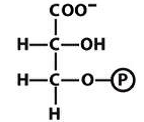
|
3-phosphoglycerate |
|
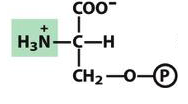
|
3-phosphoserine |
|
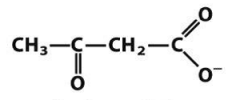
|
acetoacetate |
|

|
acetone |
|

|
acetylCoA |
|
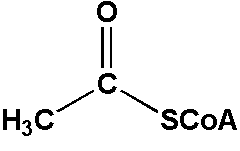
|
acetylCoA |
|
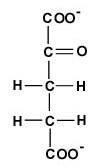
|
alpha-KG |
|

|
alanine |
|

|
alpha-KG |
|
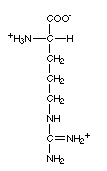
|
arginine |
|
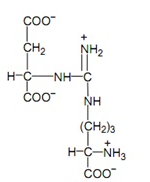
|
argininosuccinate |
|

|
asparagine |
|

|
aspartate |
|

|
benzoate |
|

|
carbamoyl phosphate |
|

|
carnitine |
|

|
ceramide |
|
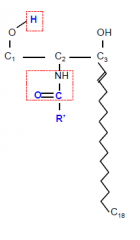
|
ceramide |
|
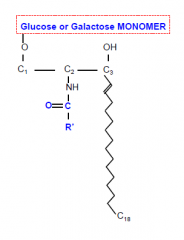
|
cerebroside |
|
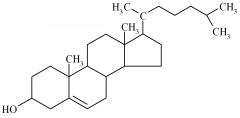
|
cholesterol |
|
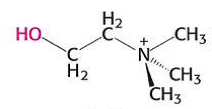
|
choline |
|

|
citrate |
|
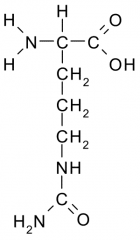
|
citrulline |
|
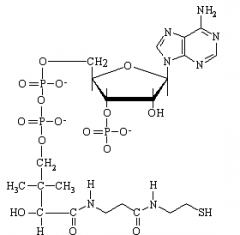
|
coenzyme A |
|

|
cysteine |
|
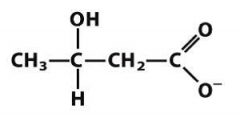
|
D-beta-hydroxybutyrate |
|

|
ethanolamine |
|
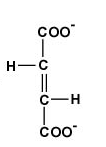
|
fumarate |
|
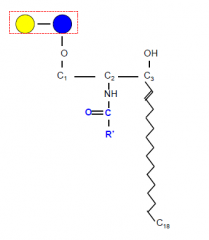
|
globoside |
|

|
glutamate |
|

|
glutamine |
|
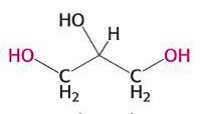
|
glycerol |
|
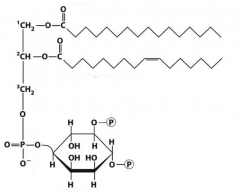
|
glycerophospholipid |
|

|
glycine |
|

|
histidine |
|
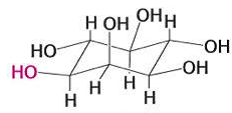
|
inositol |
|
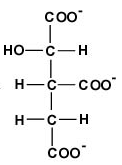
|
isocitrate |
|

|
isoleucine |
|

|
leucine |
|

|
lysine |
|
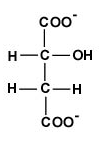
|
malate |
|
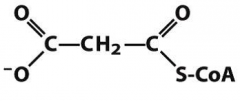
|
malonylCoA |
|

|
methionine |
|
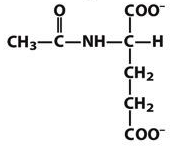
|
N-acetylglutamate |
|

|
oxaloacetate |
|

|
ornithine |
|

|
phenylalanine |
|

|
phenylbutyrate |
|

|
phenylpyruvate |
|
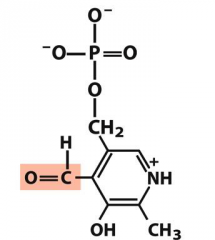
|
pyridoxal phosphate (PLP) |
|
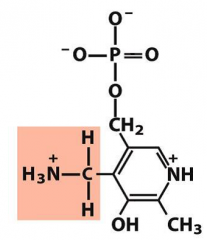
|
pyridoxamine phosphate |
|

|
proline |
|
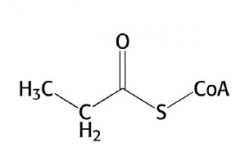
|
propionylCoA |
|

|
pyridoxine |
|

|
pyruvate |
|

|
serine |
|
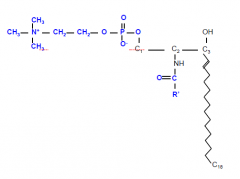
|
sphingomyelin |
|

|
sphingosine |
|

|
sphingosine |
|

|
succinate |
|
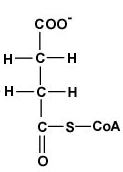
|
succinylCoA |
|

|
TAG |
|

|
threonine |
|
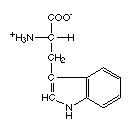
|
tryptophan |
|

|
tyrosine |
|

|
valine |
|

|
wax |

